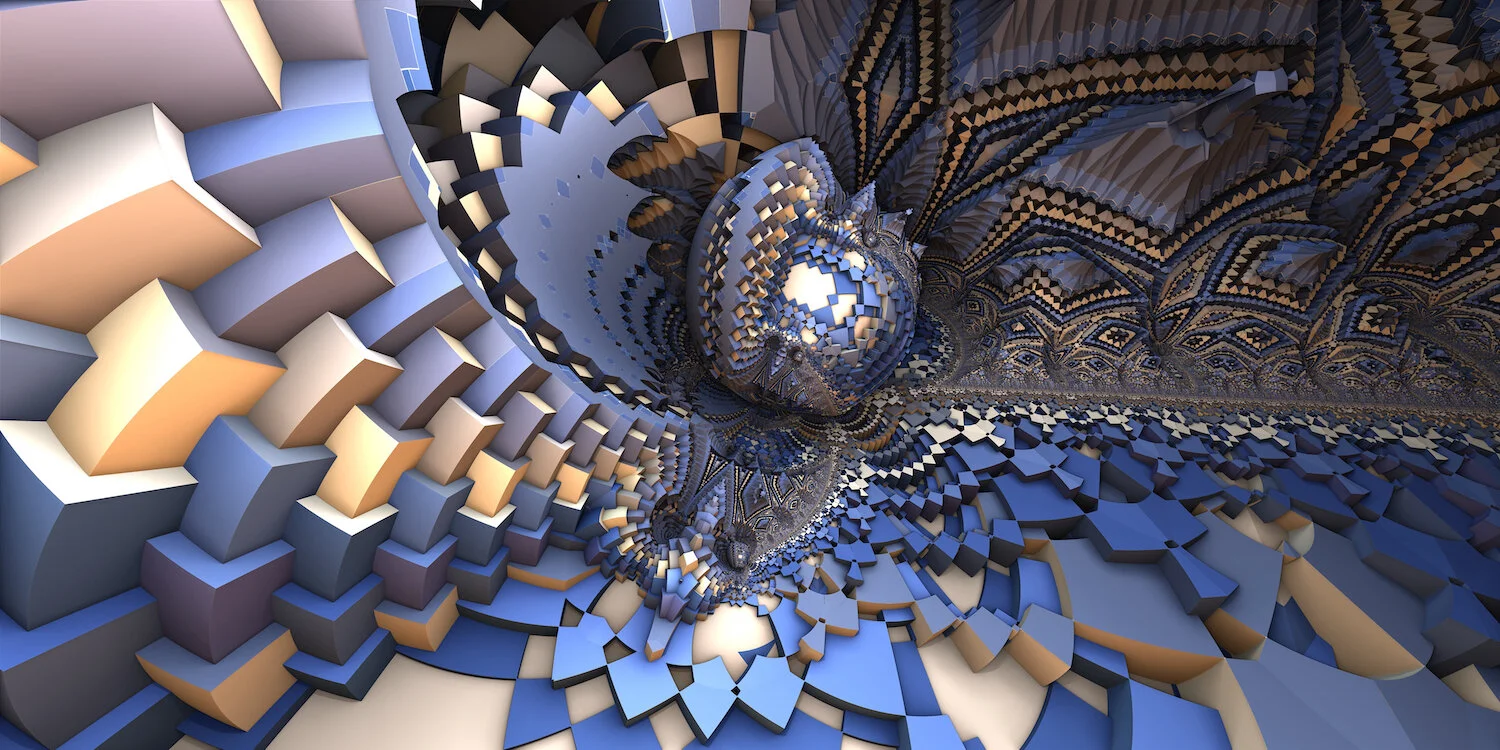“Are you really sure that a floor can’t also be a ceiling?”
Perceptual Illusions: the misinterpretation of a real external, sensory experience. (MeSH) The action of deceiving, especially by appearances. An instance of the sense perception of an external object suggesting a false belief as to its nature. (Oxford)
The experience of misperceiving the true characteristics of an object or an image. (Hockenbury, 116) A perceptual experience that is not a true representation of the physical event we are receiving through our senses. An illusion is more than a simple case of mistaken perception, it is an experience that cannot be predicted by a simple recording of the stimulus itself. (Cardwell, 126) Perceptual illusions underscore the fact that what we see is not merely a simple reflection of the world, but our subjective perceptual interpretation of it. (Hockenbury, 118)
Escher’s Images: illusions of thought. (Kahneman, 27) Impossible figures are visual riddles that capitalize on our urge to organize visual elements into a meaningful whole. Though not illusions in the true sense, his figures baffle our natural tendency to perceptually organize a scene. In most paintings, depth and distance cues are used to produce realistic scenes. But in Escher’s work, the depth cues are often incompatible, producing a perceptual paradox. As one tries to integrate the various perceptual cues in his drawing into a stable, integrated whole, one confronts perceptual contradictions - such as the conclusion that water is running uphill. Escher was fascinated by the psychological tensions created by such images. (Hockenbury, 118)
Induced Motion: an illusion of motion, experienced because we have a strong tendency to assume that the object moves, while the background is stationary. (Hockenbury, 114)
Stroboscopic Motion: an illusion of movement with two carefully timed flashing lights. A light briefly flashes at one location, followed about a tenth of a second later by another light briefly flashing at a second location. If the time interval and distance between the two flashing lights are just right, a very compelling illusion of movement is created. (Hockenbury, 114)
Waterfall Illusion: motion without position change. (Eagleman, 35)
Optical Illusions: an instance of something having an appearance so resembling something else as to deceive the eye; mental misapprehension caused by this. (Oxford) An illusion of vision usually affecting “spatial” relations. (MeSH) Also referred to as ‘visual illusions.’
Ebbinghaus Illusion: two circles in the center of patterns appear different in size simply because of the context set by the size of the circles surrounding them. (Cardwell, 126)
Moon Illusion: a visual illusion involving the misperception that the moon is larger when it is on the horizon than when it is directly overhead. (Hockenbury, 117)
Muller-Lyer Illusion: a famous visual illusion involving the misperception of the identical length of two lines, one with arrows pointed inward, one with arrows pointed outward. (Hockenbury, 117) Mechanisms that help us maintain stable perceptions in the three-dimensional world sometimes create illusions when applied to objects drawn on a two-dimensional surface. (Goldstein, 249)
Shepard Tables Illusion: consists of two tables that are oriented in different directions. It capitalizes on our automatic use of depth perception cues to perceive what is really a two-dimensional drawing as three-dimensional objects. By relying on these well-learned depth perception cues, most people pick the more vertically-oriented table as being the longer one. (Hockenbury, 118)
Somatic Illusions: tricks used to make parts of your body feel like they are growing, shrinking, bending, etc. Examples (include) ‘Pinocchio,’ ‘Shrinking Waist,’ ‘Doorframe,’ and ‘Rubber Hand.’ (Blakeslee, 34)
Parchment Skin Illusion: experiment in which a subject rubs their hands together while listening to music. Higher frequencies make you feel as if your hands are rough. Lower frequencies make the hands feel smooth. (Blakeslee, 116)
